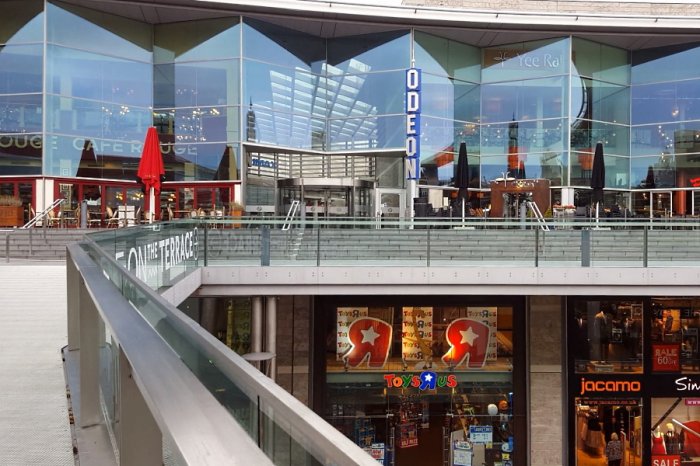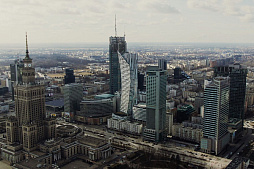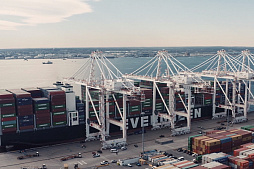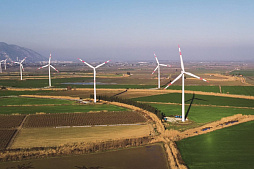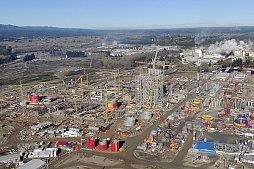After receiving the necessary documents and project presentation, our team will try to review your request as soon as possible, and leading experts will offer the best options for project funding.
These models are developed to address the significant capital requirements and risks associated with developing and operating huge LNG regasification infrastructure. They provide a framework for securing financing from different sources, such as banks, private investors, government agencies, and international institutions.
Main funding sources and financial models for LNG projects
When attracting and distributing capital for the construction of an LNG regasification terminal or other liquefied natural gas infrastructure, various financial models and mechanisms can be utilized.Below are some types of financial options commonly used in this context.
Project Finance (PF)
Project finance involves securing long-term funding for the construction and operation of the LNG terminal.This approach involves creating a Special Purpose Vehicle (SPV) to own and operate the project. Project finance relies heavily on the cash flow generated by the project as the main source of repayment for the debt. Lenders carefully assess the project's viability and cash flow projections to determine the loan amount and specific terms.
Equity financing
The so-called equity financing involves attracting capital by selling ownership stakes in the LNG regasification project.Equity investors provide capital in exchange for a share of future revenues. Equity financing can involve large institutional investors, private firms, and infrastructure funds. The equity investment helps to finance the project's initial capital requirements and can provide a return on investment through dividends or capital appreciation.
Debt financing
Debt financing plays a significant role in funding energy projects, including the construction of LNG terminals.Debt financing involves borrowing funds from lenders with the commitment to repay the principal amount along with interest over a specified period. This category includes large loans issued by private investors, loans from commercial banks, as well as loans from international financial institutions and development banks.
Hybrid financing
Hybrid financing is a complex mechanism that combines different financial models and instruments to meet the funding requirements of an LNG regasification terminal project.This approach can involve a combination of debt financing, equity financing, and other options such as mezzanine financing, vendor financing, or revenue-sharing arrangements. Hybrid financing structures aim to optimize the project's capital structure and minimize the overall cost of capital.
Public-Private Partnerships (PPPs)
PPPs involve collaboration between public entities, such as governments or government-owned entities, and private companies to finance and develop large strategically important projects. In the context of LNG terminals, PPPs can provide direct access to public funds, technical expertise, and regulatory support (licensing and permitting). The private partner typically contributes equity and expertise, while the public partner provides capital and regulatory support.Public offerings and IPOs
In some cases, LNG regasification terminal projects may opt for public offerings or initial public offerings to attract capital from public investors.This involves listing the investment project or the SPV's shares on a stock exchange, allowing investors to buy and trade the shares. Public offerings can provide access to a larger pool of capital and diversify the project's ownership base.
Each financial model has its advantages, risks, and suitability depending on the project's specifics, investor preferences, and current market conditions. The choice of financial model for attracting and distributing capital for an LNG terminal project depends on factors such as the project's scale, location, risk profile, and the regulatory environment. It requires careful analysis, structuring, and engagement with relevant stakeholders to ensure successful financing and construction.
Technical factors to consider when financing LNG terminals
When planning and analyzing LNG terminal projects, various technical aspects come into play. Each of them significantly affects the overall cost of the project, the need for financing, projected profits and other key financial indicators during operation.The table below lists some project aspects to consider.
| Factors / aspects | Brief description |
| Terminal capacity | The capacity of an LNG regasification terminal refers to the amount of LNG it can handle per unit of time. It is measured in metric tons per annum (MTPA) and billion cubic metres per annum (BCM). For example, the South Hook LNG Terminal in the United Kingdom has a capacity of 15.6 MTPA, while the Gate LNG Terminal in the Netherlands has a capacity of about 12 BCM per year. |
| Utilization rate | The utilization rate of an LNG terminal is the percentage of its capacity that is actually utilized by operators. Higher utilization rates indicate efficient operations and a strong market demand for product. The average utilization rate for LNG regasification terminals worldwide is estimated to be around 60-70%. |
| LNG storage capacity | All the terminals require storage facilities to hold LNG before it is regasified and sent into the pipeline. The storage capacity is typically measured in cubic meters or thousands of cubic meters (kcm). The aforementioned Gate LNG Terminal has a storage capacity of approximately 180 kcm. |
| Ship unloading systems | LNG regasification terminals have ship unloading facilities to receive LNG carriers and transfer the gas into special storage tanks. These systems include jetty structures, loading arms, and cryogenic pipelines. The capacity of ship unloading facilities is measured in terms of LNG carrier sizes, such as the number of “standard-size” carriers that can be handled simultaneously. |
| Regasification capacity | Regasification capacity refers to the rate at which LNG is converted back into its gaseous form. It is measured in million cubic meters per day (MMCMD) or million standard cubic feet per day (MMSCFD). For example, the Bahia LNG Terminal in Brazil has a regasification capacity of approximately 14 MMSCFD. |
| Gas send-out capacity | Gas send-out capacity represents the maximum volume of gas that the terminal can deliver into the pipeline or directly to consumers. It is also measured in MMCMD or MMSCFD. |
| LNG delivery points | LNG terminals have multiple delivery points where the regasified natural gas is sent. These points can include interconnection pipelines, industrial consumers, power plants, or distribution networks. The number and capacity of delivery points vary depending on the terminal's location and customer requirements. |
| Gas quality specifications | Regasified gas from LNG terminals must meet certain specifications, such as calorific value, pressure, and composition. These strict specifications ensure that the gas is compatible with the existing pipeline infrastructure and end-user requirements. |
| Construction timelines | The construction timeline for an LNG terminal can vary depending on factors such as project size, complexity, regulatory processes, and environmental considerations. On average, the construction of an LNG terminal can take anywhere from three to five years or more. |
It's very important to note that the figures provided here are examples and can vary based on project specifics, market conditions, and regional factors. Analyzing the important facts and figures of LNG regasification terminal projects requires a comprehensive professional approach.
Market, regulatory and financial factors affecting the LNG project
When financing an LNG regasification terminal project, several financial and market factors should be considered to ensure a successful strategy.Many of them are derived from or closely intertwined with the above technical factors. Below are some key aspects to take into account.
Investment costs
The total investment costs for LNG terminals can vary depending on the project's scale, location, infrastructure requirements, and local regulatory environment. Large-scale projects can involve investments ranging from several hundred million dollars to several billion dollars. For example, the Ichthys LNG Terminal in Australia required an estimated investment of around $40 billion.LNG market dynamics
Project sponsors should evaluate the current and projected LNG market dynamics, including supply and demand trends, pricing mechanisms, and market competitiveness.Factors such as local demand growth, LNG trading patterns, long-term contracts, and the potential for spot market sales should be considered. Understanding the market dynamics helps determine the revenue potential and market risks associated with the particular project.
Regulatory environment
Project team should also evaluate the regulatory framework and policies governing the LNG industry in the host country. Consider factors such as licensing requirements, environmental regulations, tariff structures, and government support mechanisms.Project economics and financial viability
A comprehensive financial analysis is important to understand the project's feasibility. This includes factors such as capital costs, operating costs, cash flow forecasts, and standard indicators like return on investment (ROI), net present value (NPV), and internal rate of return (IRR). The analysis helps determine the project's financial viability and attractiveness to lenders and investors.Financing structure and capital requirements
The basis of the financial model of the LNG terminal is the right capital structure. It is important to consider the capital requirements and the risk appetite of lenders / investors. Financial team should evaluate the proportion of equity and debt financing, potential sources of capital, and the ability to access different financial instruments such as loans, bonds, or export credit agency (ECA) financing. Another question is the project's ability to generate cash flows for debt servicing.Creditworthiness and risk mitigation
Financial team should assess the creditworthiness of the LNG project sponsors.Factors such as the sponsors' financial health, track record, and industry expertise can influence the financing terms and availability of funding sources. It is also important to consider risk mitigation strategies, such as project insurance, bank guarantees, some hedges against LNG price volatility, and appropriate risk allocation in project contracts.
Project development stage
LNG projects can change owners at different stages of development for various reasons. It is critically important to consider the stage of project development, as it impacts the risk profile and financing options. Early-stage projects may require higher-risk financing options or support, while advanced-stage projects with permits, off-take agreements, and engineering procurement construction (EPC) contracts may attract more favorable financing terms.Local market and host country risk
Financial team should also carefully evaluate the market and country-specific risks associated with the project location. Factors such as political stability, sanctions, legal framework, currency risk and potential geopolitical stresses can influence the financing terms and investors' risk perception.Adequate stakeholder engagement
Financial team should work closely with stakeholders, including lenders, investors, government agencies, off-takers, buyers and local communities. Strong relationships and open communication channels should be established and managed properly.By carefully considering these regulatory, financial and market factors, project sponsors can develop a robust strategy that aligns with the project's requirements and attracts the necessary funding. It is recommended to work closely with experienced advisors to navigate the project.
GCAM Investment Group provides a full range of financial engineering services for companies planning large projects in the energy sector and the oil & gas industry. Contact us to find out more.
Participants in financing LNG regasification terminal projects
When financing an LNG regasification terminal, several important participants are involved in the model. Below is a list of typical participants along with a brief description of their project roles.Project sponsors
Project sponsors are the entities that initiate and develop the LNG regasification terminal financial model. They are responsible for project planning, securing permits and licenses, and overseeing the construction and the subsequent operation. Project sponsors often contribute their own capital (usually 10 to 50% of total cost) and seek additional financing from other sources.As for the notable examples, Cheniere Energy was the project sponsor for the Sabine Pass LNG regasification terminal in the USA (total cost of the project is estimated at $5.6 billion). Cheniere Energy secured financing and managed the construction of the facility, becoming a major player in liquefied natural gas exports on the local market.
Commercial banks
Large commercial banks play a significant role in providing debt financing for LNG terminal projects.They assess the project's financial viability, conduct professional due diligence, and provide loans based on their risk assessment. Banks also assist in structuring the existing loan agreements, determining interest rates, and monitoring the project's progress and compliance.
Large banks like JPMorgan Chase, Bank of America, and Citigroup have been involved in providing project financing for LNG regasification terminals. They assess the financial viability of the projects, structure loan agreements, and monitor progress. An example is the Cove Point LNG terminal in the United States, where a consortium of banks provided project financing.
Export credit agencies
ECAs are government-backed institutions that provide comprehensive financial support, including loans, guarantees, and insurance, to promote exports and mitigate commercial and political risks. In the context of LNG regasification terminal construction, ECAs may provide financing or guarantees for the purchase of equipment or services from exporting countries.Development banks
Development banks, such as multilateral or regional financial institutions, focus on promoting economic development and providing financing for infrastructure projects. They often have specific mandates to support sustainable and socially responsible projects. Development banks may offer loans, guarantees, or technical assistance to LNG regasification terminal projects.Infrastructure funds
The so-called infrastructure funds are investment funds that focus on financing large infrastructure projects, including LNG terminals. These funds pool capital from the wide range of investors, such as pension funds, insurance companies, and sovereign wealth funds, and invest in long-term infrastructure assets. Infrastructure funds also provide access to expertise in LNG investments.The Export-Import Bank of the United States has supported the financing of LNG projects. For instance, it provided financing and loan guarantees for the Cameron LNG terminal in Louisiana.
Government agencies
Specialized government agencies and local governments sometimes play a crucial role in the financing of LNG regasification terminals.They may provide regulatory support, permits and licenses required for project development. Governments can also offer financial incentives, tax benefits and guarantees to attract private sector investment in LNG infrastructure.
The Australian government supported the development of LNG projects, including the construction of regasification terminals. It provided permits, regulatory support, and some financial incentives to attract private capital in projects such as the Wheatstone LNG terminal (Western Australia).
Development banks
International and regional development banks offer financing options for LNG regasification terminals. These banks focus on promoting economic development and often provide lower-cost financing, technical expertise, and assistance in meeting social and environmental standards.The Asian Development Bank has played a role in financing LNG terminals. A notable example is its involvement in the Bangladesh LNG and Power Project, where the ADB provided huge financial support and technical assistance to develop the country's first LNG import terminal.
Equity investors
Equity investors, such as large private equity firms and sovereign wealth funds, provide capital in exchange for an ownership stake in the LNG project. They usually seek returns on their investments through dividends or capital appreciation and may participate in project decision-making.Large world famous companies participate in such projects at different levels. For example, Qatar Petroleum and ExxonMobil partnered in the Golden Pass LNG terminal in the United States. Both companies invested equity capital and held ownership stakes in this project, leveraging their expertise and resources in the LNG industry.
Equipment suppliers
A significant part of the project cost for the construction of the LNG terminal is for the purchase of equipment.Equipment suppliers, such as manufacturers of LNG storage tanks, regasification units, or marine facilities, can provide financing options to facilitate the sale of their equipment. Supplier financing arrangements may include some type of deferred payment, lease agreements, or alternative options that help project sponsors acquire the necessary equipment.
Companies like Samsung Heavy Industries and TechnipFMC provide equipment financing options to LNG terminals. They usually offer their customers very flexible payment terms and arrangements to facilitate the purchase of equipment required for the construction and operation of facility.
Offtakers and LNG buyers
These are entities that enter into long-term agreements to purchase the LNG from the planned terminal. These agreements, often called LNG sales and purchase agreements (SPAs), provide certainty and help attract capital by demonstrating a reliable model and cash flow generation.Tokyo Gas and Centrica are examples of companies that have signed long-term LNG purchase agreements to support the construction of LNG terminals. These agreements provide revenue certainty for project sponsors and enable the financing of terminals such as the aforementioned Cameron LNG project in the United States.
It's important to note that the specific participants involved in financing an LNG terminal financial model may vary depending on the project's location, size, cost and market conditions.
Each participant brings unique expertise and resources to the table, contributing to the successful financing and implementation of the investment project.

Long-term loans issued by private investors
When it comes to financial model of an LNG terminal, long-term loans issued by large private investors and / or private investment funds can play a significant role. This approach to project financing is based on borrowed capital from private sources other than traditional lenders like commercial banks or development banks.Private investors can provide affordable long-term capital to finance expensive projects in the long run.
These investors usually seek opportunities that offer stable and long-term returns, and infrastructure projects like LNG terminals can align with their investment criteria.
Private investment funds, including infrastructure funds, can also participate in financing LNG terminal projects. These funds pool capital from multiple investors and deploy it in infrastructure projects with the aim of generating attractive risk-adjusted returns. They usually have expertise in infrastructure investments and can provide access to substantial funding for large-scale projects.
Private investors and private investment funds can provide debt financing by issuing long-term loans to the LNG regasification project. The terms and conditions of these loans are usually flexible and are negotiated between the project sponsors and the investors, taking into account factors such as market interest rates, repayment schedules, and security arrangements.
As a rule, private investors and funds often seek yield-based returns from their investments.
They expect a regular and predictable cash flows in the form of interest payments on the loans provided to the project. The interest rates on these loans are typically negotiated based on market conditions, project risk profile, and the desired return expectations of the investors.
The loans issued by private investors are typically repaid from the cash flows generated by the LNG regasification project. These cash flows come from such sources, as capacity payments, throughput fees, or revenue-sharing agreements. Project sponsors analyze the projected cash flows and ensure they are sufficient to meet the interest and principal repayment obligations to the private investors.
Structuring investment loan terms and negotiating with private investors requires expertise in finance and legal considerations. The project sponsors usually work closely with financial and legal advisors to ensure the loan agreements are structured appropriately, taking into account the project's cash flow projections, risk allocation, collateral requirements, and other terms.
As for risk allocation, private investors usually conduct comprehensive due diligence to assess the risks associated with the particular LNG facility. They evaluate numerous factors such as projected LNG demand, regulatory environment, operational risks, and project execution parameters. Risk allocation mechanisms, such as appropriate risk-sharing arrangements and contractual provisions, are put in place to mitigate these risks and protect the interests of the investors.
Engaging private investors in LNG regasification terminal projects offers diversification in the sources of funding.
This diversification reduces dependency on a single source of financing and thereby strengthening the project's financial stability.
It's important to note that attracting long-term loans from private investors and investment funds requires a well-structured project with a compelling investment proposition. The project sponsors must demonstrate the financial viability and effective risk management framework.
Overall, private investors and investment funds can be valuable contributors to the financing of LNG terminals, providing long-term capital that is urgently needed at the earliest stages of the project. The engagement of such investors requires throughout financial analysis, professional project structuring, and advanced negotiation skills to successfully secure their participation.
Factors affecting the appetite of private investors for LNG projects
Several factors can influence the financial participation of private investors in LNG projects. These factors can impact the attractiveness and feasibility of the project from the investor's perspective.Project viability
Large private investors assess the overall viability of the LNG regasification project, including its technical feasibility, market demand, and profitability. They evaluate factors such as the project's location, access to gas supply, regulatory environment, competitive landscape, and potential risks.Return of investment (ROI)
Private investors seek, first of all, attractive returns on their investments.They evaluate the financial performance of the particular project, including the expected cash flow generation and profitability. The project's cash flows, cost structure, and gas pricing mechanisms are carefully analyzed to assess the projected ROI. Investors consider the risk-return profile of the project and compare it to other opportunities in the market.
Long-term revenue stability
Private investors and investment funds prefer projects that offer revenue stability. In the case of LNG projects, they look for long-term contracts or off-take agreements with reliable partners, such as liquefied natural gas suppliers or end-users. This is often the decisive factor in deciding whether to finance LNG infrastructure, given the complexity and volatility of the market.Risk allocation and mitigation
Investors carefully evaluate the risk allocation and mitigation measures in place for the LNG project.They assess factors such as regulatory risks, construction / operational risks, and market risks. The appropriate risk-sharing mechanisms, insurance coverage, contractual safeguards, and risk mitigation strategies can enhance investors confidence and attract their participation.
Financial structure of the project
The financial structure of the LNG regasification project can influence private investor appetite. Capital providers analyze the project's financial structure, including such criteria as the debt-to-equity ratio, seniority of debt, and collateral arrangements. A well-balanced and transparent financial structure can enhance investor confidence.Policy and regulatory environment
The policy plays a crucial role in attracting private investors to risky projects. Investors consider factors such as stable and supportive government policies, transparent regulatory frameworks, and favorable incentives. A conducive policy environment that provides a clear and predictable business framework can encourage private investors to engage in LNG projects.Project sponsor and management
Private investors also evaluate the capabilities and track record of the project sponsor and management team. They assess the sponsor's expertise in developing and operating similar LNG regasification projects, their financial strength, and their ability to manage risks. A credible and experienced sponsor with a strong professional team can instill confidence in investors.Market conditions
External factors, such as prevailing LNG market conditions and market sentiment, can impact private investor participation.Economic trends, interest rates, overall energy market dynamics, and geopolitical factors can influence investor appetite for LNG regasification projects. Changes in market conditions may affect the availability and cost of capital, which impact investor decisions.
It's important to note that the specific importance of these factors may vary depending on the individual investor's strategy, risk appetite, and investment criteria. Successful engagement with private investors in LNG projects requires addressing these factors and effectively.
If you are looking for capital for your future project, our team is ready to offer you advanced financial models and solutions to achieve your goals.
We offer long-term private capital for the construction of LNG plants, terminals, pipelines and other energy infrastructure around the world.
Contact us to schedule an initial consultation and learn more about our offerings.










